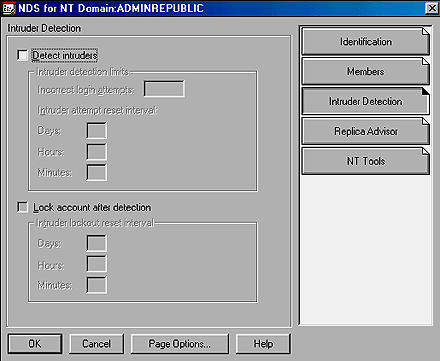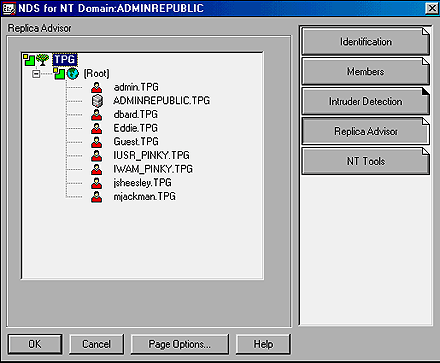|
|
|
If you click the Intruder Detection tab, you'll see the screen shown in Figure C. This window allows you to enable NDS Intruder Detection on the NT server. If a user tries to play "guess-the-password" on the NT server, and you've enabled Intruder Detection, NDS will lock the user account out of the server.

Figure C You can enable intruder detection on your NT server through NDS. To enable Intruder Detection, select the Detect Intruders check box. You can
then set the number of failed attempts to watch for in the Incorrect Login
Attempts field. By default, users get seven attempts before being locked out. If
you want greater security, enter a lower number. The Intruder Attempt Reset
Interval counts the number of login attempts within a certain time period. By
default, this period is 30 minutes. The Intruder Lockout Reset Interval controls
the amount of time the user is temporarily locked out of NDS. After this time,
the user can try logging in again. You can unlock the user prior to the
expiration of the interval by going to the User object.

Figure D The Replica Advisor tab helps you determine whether you need to install a replica on your NT server. Why do I need replicas?NDS replicas contain the NDS information necessary for users to log on to the network. If the replica is held on a server that is separated from the users by a slow or unreliable WAN link, the users will experience slow logons. In some cases, they may not be able to log on at all, even if they have a server locally. With a local replica, you don't have to worry if your WAN goes down. Users authenticate based on information in the replica.
Figure E The NT Tools tab allows you to launch NT utilities from within NetWare Administrator.
| |||||
|
Send mail to webmaster@kjp-ltd.co.uk with questions or comments about this web site. |